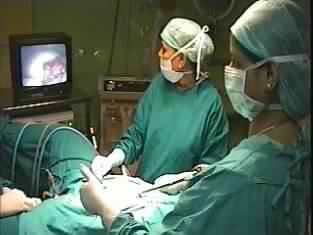Pelvic Laparoscopy is a minimally invasive procedure that is used when there is the requirement to examine or treat pelvic organs. This is done through a small viewing instrument called a laparoscope which is inserted into the abdomen from the navel.
There are number of different scenarios wherein pelvic laparoscopy may be performed:
- This procedure is performed to detect salpingitis or appendicitis
- It may shed light on the causes of infertility
- If an abdominal ultrasound reveals any abnormal pelvic mass it can be removed by a pelvic laparoscopy
- If there is pelvic pain due to certain infections or pelvic inflammatory diseases, pelvic laparoscopy could come in useful
- Torsion or an ovary, ovarian cyst, endometriosis or scar tissue in the pelvis could also require pelvic laparoscopy
- Hysterectomy or tubal ligation can also be performed by way of pelvic laparoscopy
- A tubal pregnancy can also be addressed
- Uterine fibroids can also be removed using this procedure
When a pelvic laparoscopy is performed, general anesthesia is administered and a tiny (1/2″ to 3/4″) incision is made in the abdomen at the site of the navel.
The abdominal cavity is then pumped with gas so that it swells and the doctor is able to see and work better. A laparoscope (a one-half inch fiber-optic rod with a light source and video camera) is then inserted in order to detect or diagnose the problem or to treat it.
The image from the inserted camera is projected onto the video monitors affixed close by, permitting the surgeon to ‘look inside the stomach’.
If it is for surgical purposes (not diagnostic) that the laparoscope has been inserted, various instruments will be inserted and surgery will be performed by the surgeon using the video screen to guide his actions.
On occasions, it may be that before the procedure the possibility of a full sized incision is discussed with the patient if there is the apprehension that the laparoscopy won’t be able to address the problem fully or adequately. In this case, consent will be obtained before the start of the procedure.
Since pelvic laparoscopy is minimally invasive, there is little pain even after the procedure and the time taken for recovery is short for most people. There could be some shoulder or chest pain following the procedure. This is because of the gas (carbon dioxide) injected into the abdomen at the time of the procedure.



